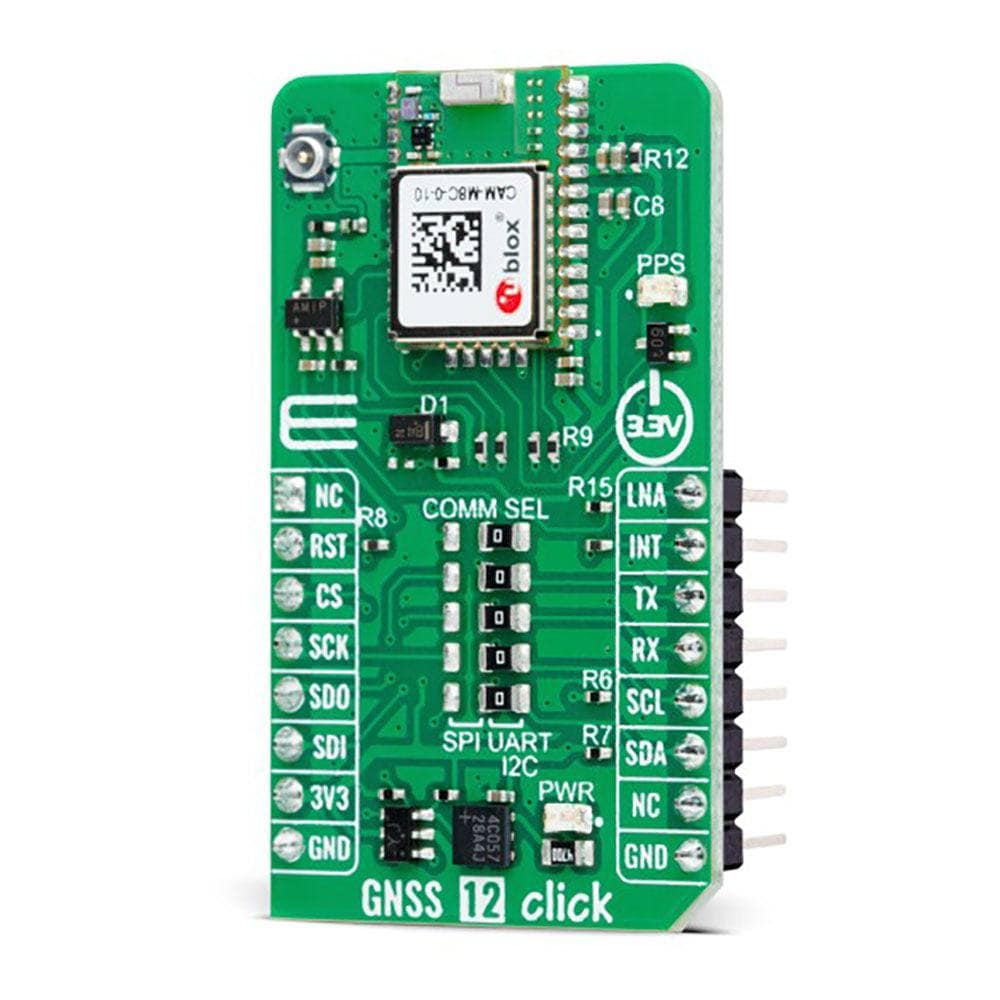
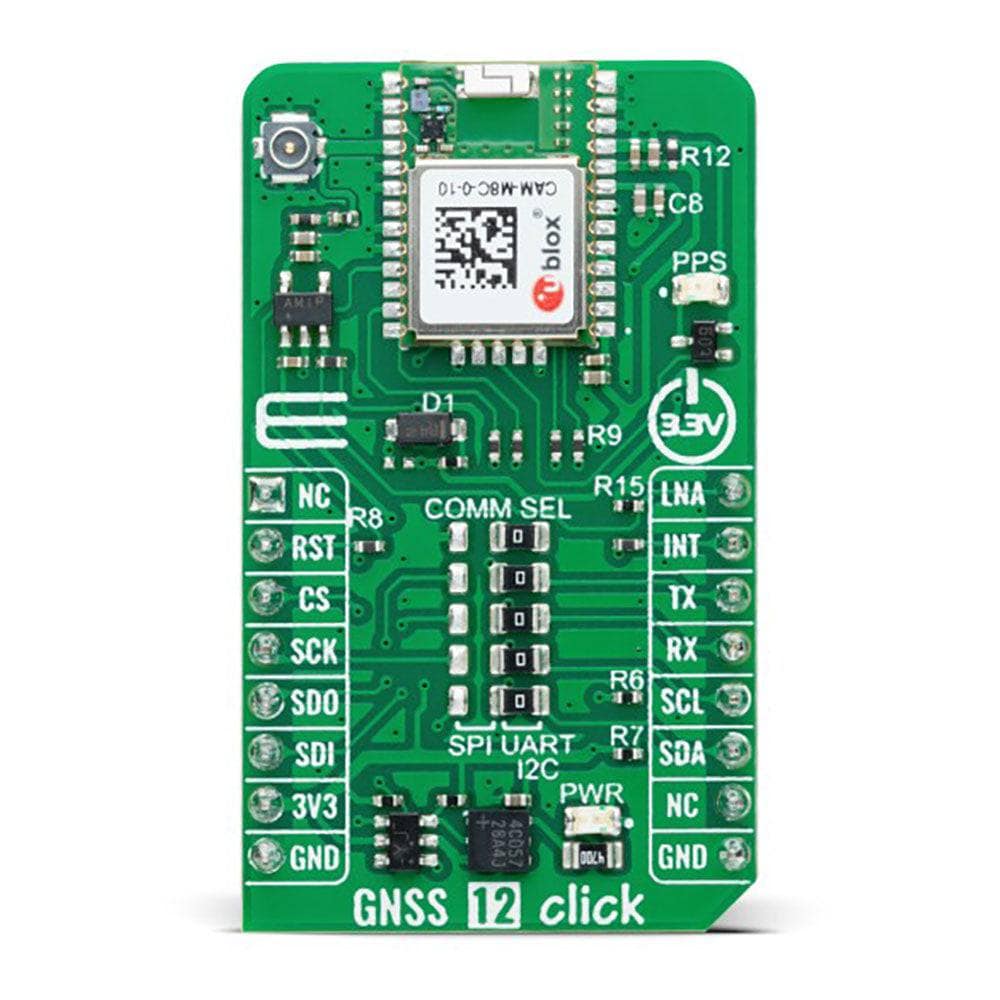
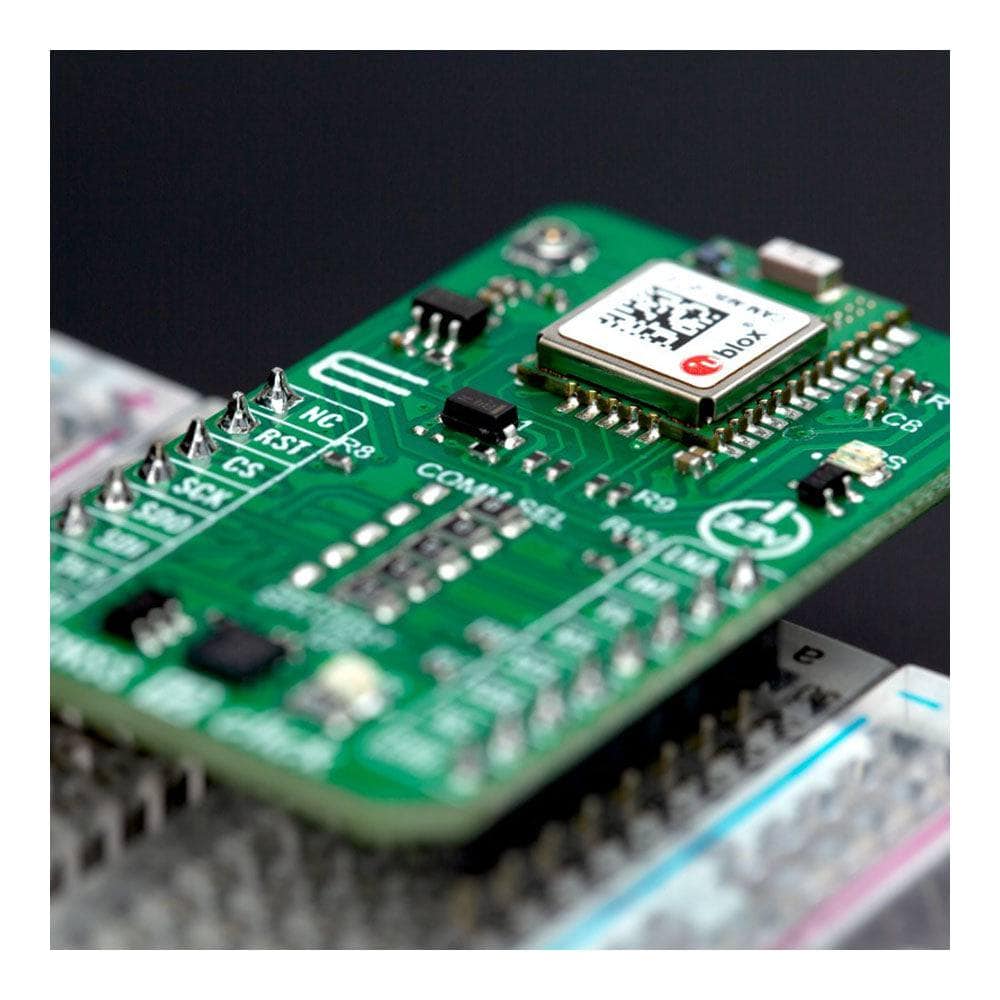
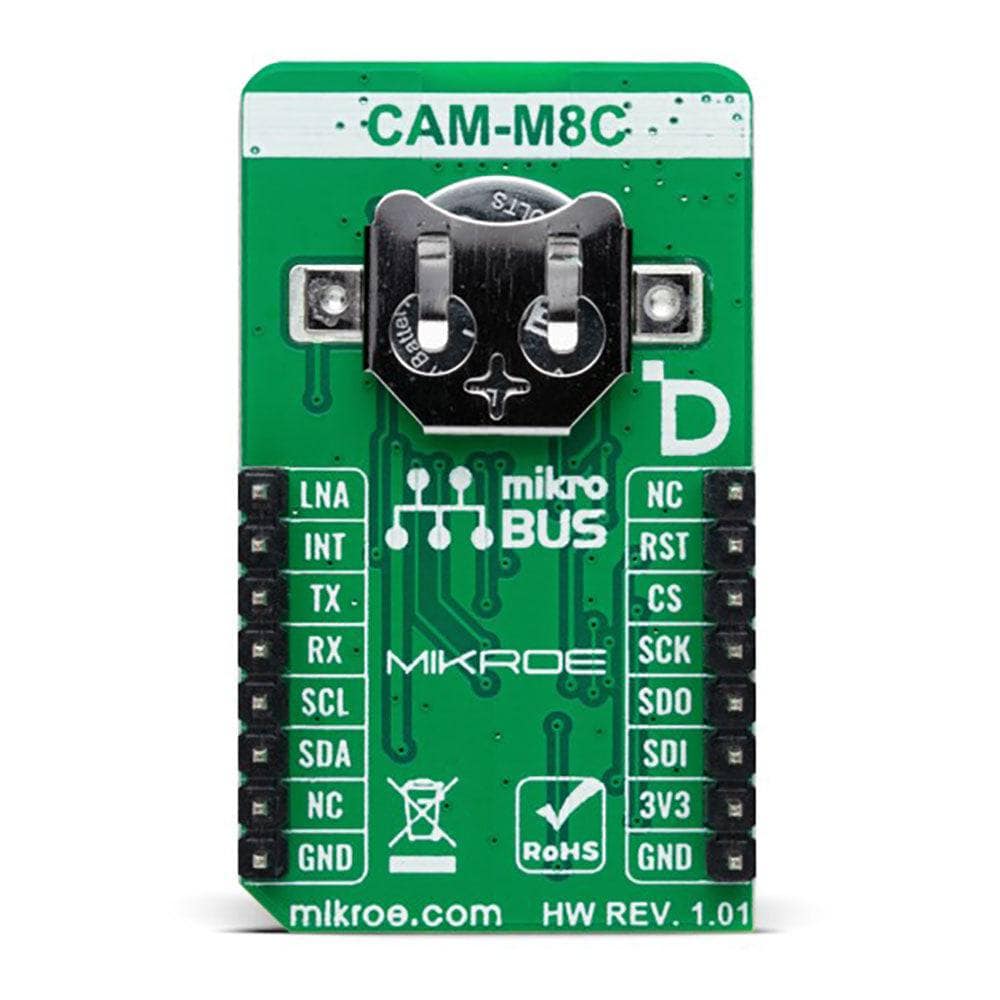
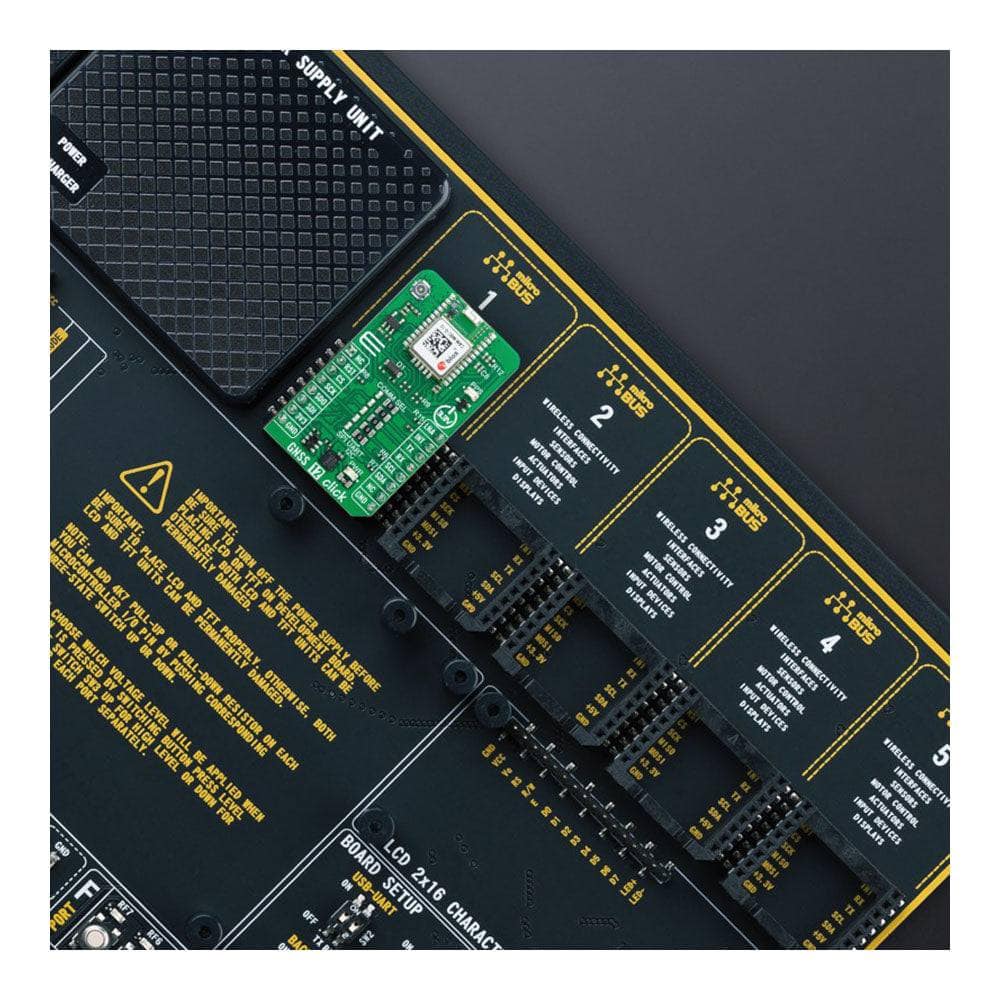
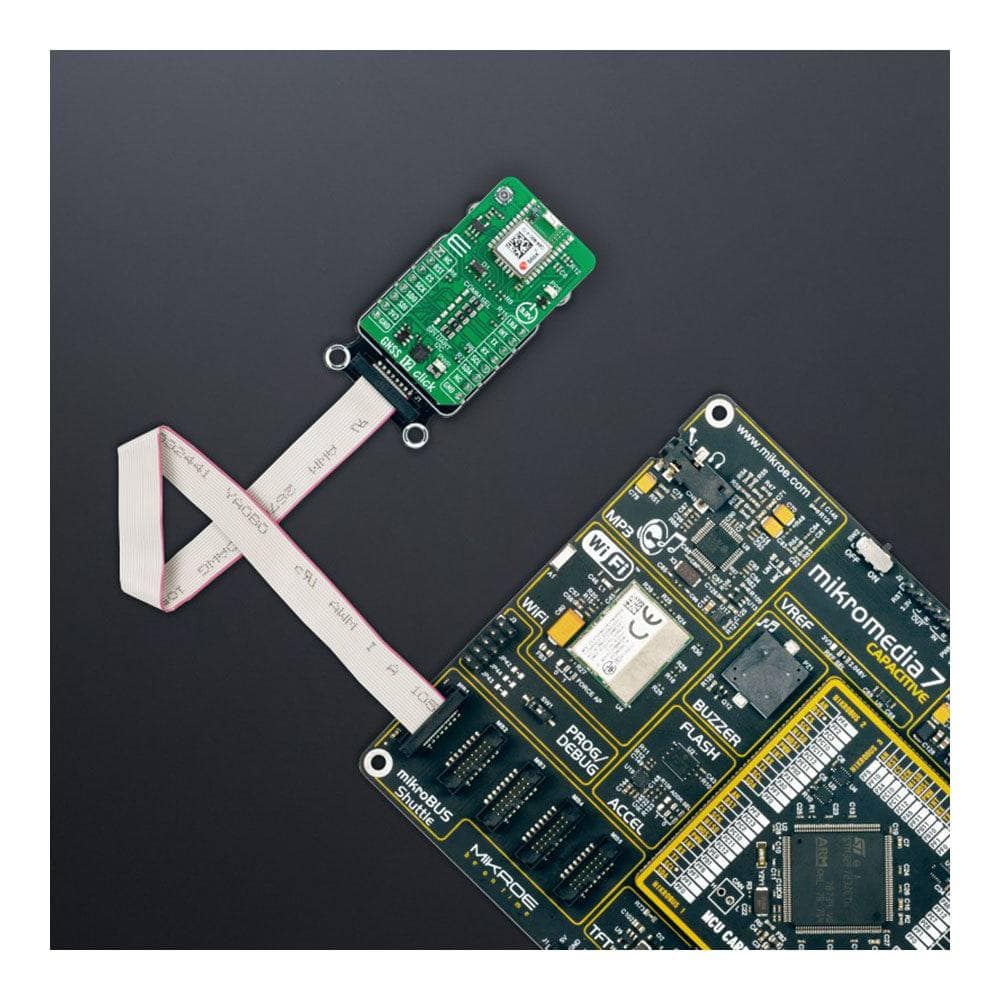
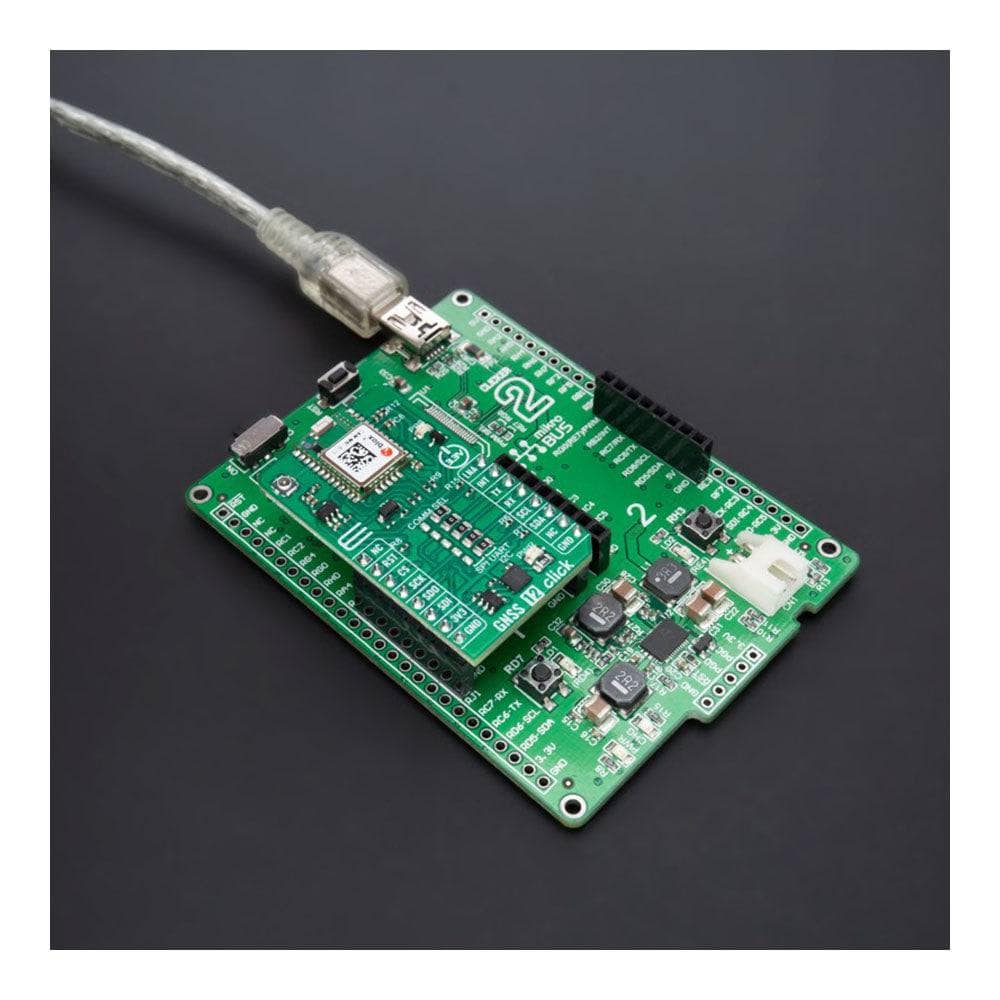
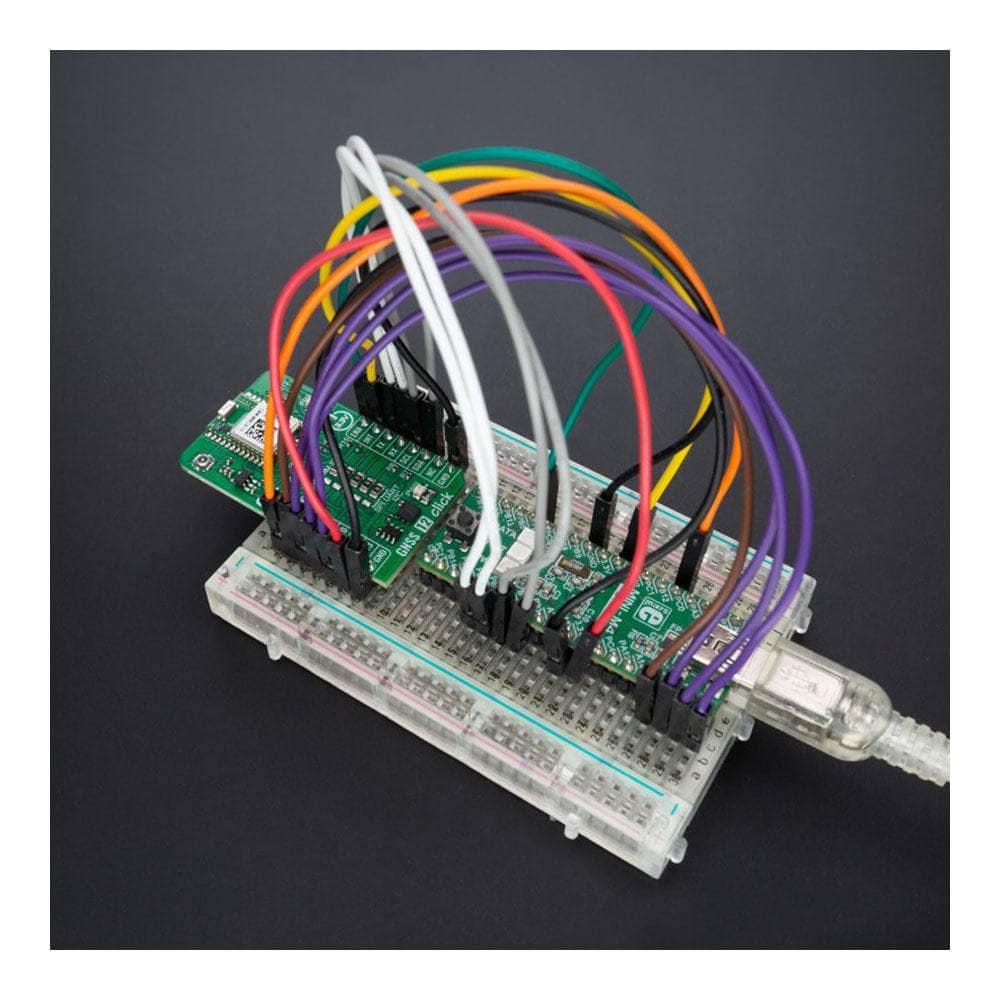
How Does The GNSS 12 Click Board™ Work?
The GNSS 12 Click Board™ is based on the CAM-M8C, a concurrent GNSS chip antenna module from u-blox. The CAM-M8C is built on the high-performing M8 GNSS engine and utilizes simultaneous reception of up to three GNSS systems (GPS/Galileo together with BeiDou or GLONASS). It offers high sensitivity and minimal acquisition times while maintaining low power consumption and provides outstanding positioning accuracy even in GNSS-hostile environments. It also supports message integrity protection, geofencing, and spoofing detection with configurable interface settings to fit applications, such as industrial and automotive, easily.
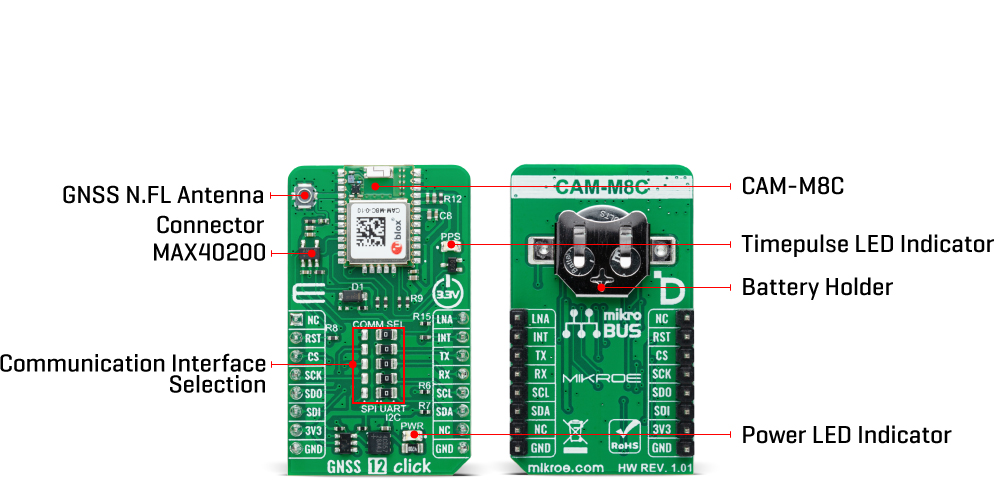
The CAM-M8C communicates with the host MCU using the UART interface at 115200bps as its default communication protocol but also has other interfaces, such as SPI and I2C. The interface is selected by positioning SMD jumpers labelled COMM SEL in an appropriate position. Note that all the jumpers' positions must be on the same side, or the Click board™ may become unresponsive. In addition, this board also uses several mikroBUS™ pins. The reset pin routed on the RST pin of the mikroBUS™ socket provides the general reset ability, while the INT pin of the mikroBUS™ socket represents an external interrupt. An interrupt feature can be used for wake-up functions in the power save mode and aiding.
In the case of the primary supply failure, this Click board™ can use a backup supply voltage from a connected battery if you need the Click board™ to be a standalone device. Backup voltage supplies the real-time clock and battery-backed RAM and enables all relevant data to be saved in the backup RAM to allow a hot or warm start later. The module performs a cold start during a Power-Up sequence if the backup battery is not connected. In addition to precise positioning, the GNSS 12 Click also has an accurate timing signal indicated through an orange LED indicator marked as PPS.
Besides an integrated omni-directional GNSS chip antenna, the GNSS 12 Click possesses the N.FL antenna connector for connecting the appropriate active antenna offered by MikroE for improved range and received signal strength. Thanks to the LNA pin, routed to the PWM pin of the mikroBUS™ socket, it is possible to control the use of the external antenna through the MAX40200, and thus the power consumption in the power save mode. Also, for the simplest possible implementation of SMA antennas on these types of connectors, the MMCX-SMA Cable from our offer is recommended.
The GNSS 12 Click Board™ can only be operated from a 3.3V logic voltage level. Therefore, the board must perform appropriate logic voltage level conversion before using MCUs with different logic levels. However, the Click board™ comes equipped with a library containing functions and an example code that can be used as a reference for further development.
SPECIFICATIONS
| Type | GPS/GNSS |
| Applications | Can be used for industrial and consumer applications that require concurrent GPS/Galileo and GLONASS or GPS/Galileo and BeiDou reception |
| On-board modules | CAM-M8C - concurrent GNSS chip antenna module from u-blox |
| Key Features | Low power consumption, concurrent reception of up to 3 GNSS (GPS/Galileo, GLONASS, BeiDou), high sensitivity, omnidirectional and wideband antenna (optional external), selectable interface, advanced jamming and spoofing detection, and more |
| Interface | I2C,SPI, UART |
| Compatibility | mikroBUS |
| Click board size | M (42.9 x 25.4 mm) |
| Input Voltage | 3.3V |
PINOUT DIAGRAM
This table shows how the pinout of the GNSS 12 Click Board™ corresponds to the pinout on the mikroBUS™ socket (the latter shown in the two middle columns).
| Notes | Pin |  |
Pin | Notes | |||
|---|---|---|---|---|---|---|---|
| NC | 1 | AN | PWM | 16 | LNA | External Antenna Activation | |
| Reset | RST | 2 | RST | INT | 15 | INT | Interrupt |
| SPI Chip Select | CS | 3 | CS | RX | 14 | TX | UART TX |
| SPI Clock | SCK | 4 | SCK | TX | 13 | RX | UART RX |
| SPI Data OUT | SDO | 5 | MISO | SCL | 12 | SCL | I2C Clock |
| SPI Data IN | SDI | 6 | MOSI | SDA | 11 | SDA | I2C Data |
| Power Supply | 3.3V | 7 | 3.3V | 5V | 10 | NC | |
| Ground | GND | 8 | GND | GND | 9 | GND | Ground |
ONBOARD SETTINGS AND INDICATORS
| Label | Name | Default | Description |
|---|---|---|---|
| LD1 | PWR | - | Power LED Indicator |
| LD2 | PPS | - | Timepulse LED Indicator |
| JP1-JP5 | COMM SEL | Right | Communication Interface Selection SPI/UART,I2C: Left position SPI, Right position UART,I2C |
GNSS 12 CLICK ELECTRICAL SPECIFICATIONS
| Description | Min | Typ | Max | Unit |
|---|---|---|---|---|
| Supply Voltage | - | 3,3 | - | V |
| Frequency Range | - | 1,575 | - | GHz |
| Sensitivity | -164 | - | -154 | dBm |
| TTF - Cold Start | 26 | - | 57 | sec |
Software Support
We provide a library for the GNSS 12 Click Board™ and a demo application (example), developed using MikroE compilers. The demo can run on all the main MikroE development boards.
The package can be downloaded/installed directly from NECTO Studio The package Manager(recommended), downloaded from our LibStock™ or found on MikroE Github account.
Library Description
This library contains API for the GNSS 12 Click Board™ driver.
Key functions
-
gnss12_reset_deviceThis function resets the device by toggling the RST pin. -
gnss12_generic_readThis function reads a desired number of data bytes from the module. -
gnss12_parse_gnggaThis function parses the GNGGA data from the read response buffer.
Example Description
This example demonstrates the use of the GNSS 12 Click Board™ by reading and displaying the GNSS coordinates.
void application_task ( void )
{
gnss12_process( &gnss12 );
if ( app_buf_len > ( sizeof ( GNSS12_RSP_GNGGA ) + GNSS12_GNGGA_ELEMENT_SIZE ) )
{
gnss12_parser_application( app_buf );
}
}
The full application code, and ready to use projects can be installed directly from NECTO Studio The package Manager(recommended), downloaded from our LibStock™ or found on MikroE Github account.
Other MikroE Libraries used in the example:
- MikroSDK.Board
- MikroSDK.Log
- Click.GNSS12
Additional Notes and Information
Depending on the development board you are using, you may need USB UART Click Board™, USB UART 2 Click or RS232 Click to connect to your PC, for development systems with no UART to USB interface available on the board. UART terminal is available in all MikroE compilers.
MIKROSDK
The GNSS 12 Click Board™ is supported with mikroSDK - MikroE Software Development Kit. To ensure proper operation of mikroSDK compliant Click board™ demo applications, mikroSDK should be downloaded from the LibStock and installed for the compiler you are using.
GNSS 12 Click Board
Frequently Asked Questions
Ask a Question-
Where can I obtain the adaptor cable necessary to connect the MIKROE-4480 antenna ?
You need to use an IPEX-SMA cable:
https://thedebugstore.com/products/ipex-sma-cable -
Is the GNSS 12 Click Board™ suitable for industrial and consumer applications?
Yes, the GNSS 12 Click Board™ is suitable for both industrial and consumer applications that require concurrent GPS/Galileo and GLONASS or GPS/Galileo and BeiDou reception.
-
Is the GNSS 12 Click Board™ ready to use?
Yes, the GNSS 12 Click Board™ comes fully tested and ready to be used with a system equipped with the mikroBUS™ socket.
-
What is the purpose of the mikroSDK-compliant library?
The mikroSDK-compliant library simplifies software development by providing functions and tools for the GNSS 12 Click Board™.
-
Can the GNSS 12 Click Board™ be used with an external antenna?
Yes, the GNSS 12 Click Board™ features a configurable host interface and can be used with an optional external active antenna.
-
What GNSS systems does the GNSS 12 Click Board™ support?
The GNSS 12 Click Board™ utilizes concurrent reception of up to three GNSS systems, including GPS/Galileo and either BeiDou or GLONASS.
-
What is the GNSS 12 Click Board™?
The GNSS 12 Click Board™ is a compact add-on board that provides positioning, navigation, and timing services through the use of a professional-grade GNSS module.








